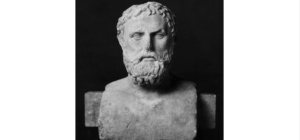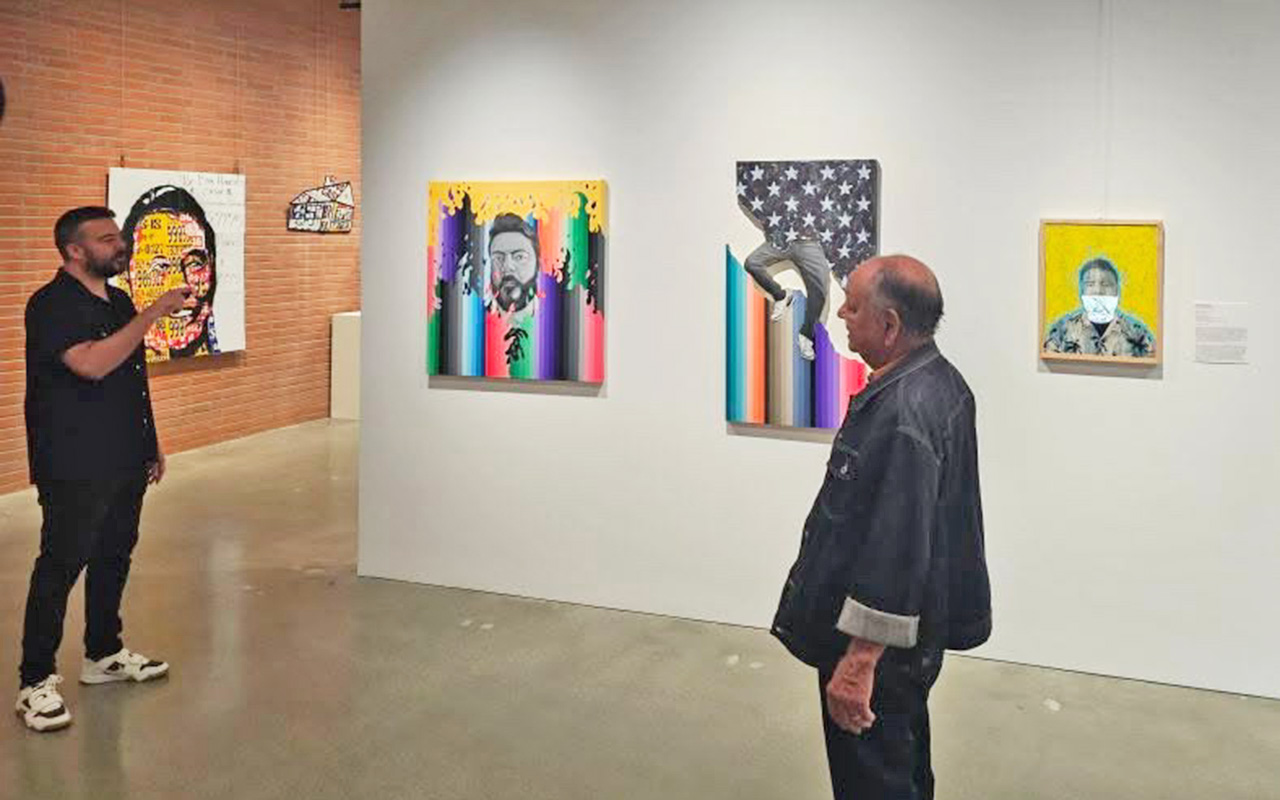
Prof. Romano edits, co-authors ‘The Fate of Antiquities in the Nazi Era’
By Michael Chesnick. October 19, 2023For University of Arizona Art History Professor Irene Bald Romano, a five-year journey with 15 other international scholars culminated last month when the authors saw their research published as a special online monograph, “The Fate of Antiquities in the Nazi Era.”
The publication — edited and co-authored by Romano — presents for the first time a comprehensive view of the fate of Mediterranean and Middle Eastern antiquities that changed hands during the Nazi period from 1933 to 1945 in Europe, the Middle East, the United States and elsewhere.

Romano wrote the preface, an extensive introduction and the lead article for the special 2023 issue of RIHA, the journal of the International Association of Research Institutes in the History of Art.
The scholars’ project, previewed by The New York Times and other news outlets in 2022, was a collaboration with the Getty Research Institute and the Zentralinstitut für Kunstgeschichte, an independent art-historical research institute in Munich.
“I hope this publication will become a standard reference on the subject of the fate of Mediterranean and Middle Eastern antiquities during the Nazi era,” Romano said, “with its extensive bibliographic and archival resources, as well as its methodologies, useful to other researchers, including individuals who are hoping to recover collections that belonged to family members who perished in the Holocaust.
“It also would be gratifying if this publication inspires students of art history, history, Classics, archival studies and other disciplines to become interested in provenance research, a growing field that has become indispensable to museums today and will remain so in the future.”
The idea for a publication was born at a meeting in Munich in October 2018. That’s when Romano and a group of German and American museum professionals, archivists and scholars — part of the Provenance Research Exchange Program (PREP) — realized the subject of the fate of Middle Eastern, Egyptian, Greek, Etruscan and Roman antiquities during the Nazi period had not been sufficiently addressed in the large body of scholarly literature on fine arts.
“Although in the past decades research into Nazi-era looted art has been widespread and provenance research in this field has blossomed, the fate of antiquities has rarely been in the spotlight and is far less systematically studied,” Hermann Parzinger, president of the Prussian Cultural Heritage Foundation in Berlin, wrote in the publication’s foreword.
“This volume makes a large contribution to filling this void. … It is valuable not just for readers with an interest in antiquities but also for scholars studying the art market and its mechanisms; for researchers exploring the networks and systems by which artworks were dispersed during the Nazi era and studying the history of restitution; and for art historians interested in the history of collecting and taste,” he wrote.
Parzinger went on to thank all the authors, especially Romano, “who not only put the topic up for discussion in 2018 but also persevered in the lengthy task of making this publication happen.”
“Last but not least, at a time when war is once more having a chilling effect on scholarly and scientific cooperation, this publication proves again the value of bringing experts together across disciplines and borders in the interest of scholarship and insight,” he said.
Romano talked more about the RIHA Journal special issue in an interview with the University of Arizona School of Art:
Q: How rewarding – and challenging – was the project?

Romano: I’m very pleased to see this research and publication project finally come to fruition, with the results accessible to scholars and the general public in this open-source, online format. … It was a challenging five-year-long journey for me with 15 other authors from various countries, each with their own work schedules and life issues, not to mention a pandemic that intervened, making visits to indispensable archives, libraries and museum collections difficult for many.
A challenge for anyone working on the Nazi period is that there are mountains of archival materials in many repositories in the U.S. and Europe, some of it duplicative, and only some it available online. In addition, in Nazi-period inventories and in various recent databases that have been created of works of art transferred during the Nazi period, archaeological objects are often not included or are cited in such a general way that they are not identifiable. I outline some of these challenges in the Introduction to the volume.
There was, however, a great deal of enthusiasm for getting this work published, and we had the unwavering support and expert advice of the Getty Research Institute in Los Angeles and the Zentralinstitut für Kunstgeschichte in Munich to bring it all about. A rewarding aspect of this was the collegiality of the authors, as well as the interest and assistance of a wider group of scholars who offered their expertise on specific issues. We have built a large research team and piqued the interest of some younger scholars who will move this research forward in the future.
Q. Could you sum up the conclusions gleaned from the broader study?
Romano: The first conclusion that can be drawn from this study is that broad conclusions are difficult. There are many individual histories of people, especially of collectors, dealers and Nazi officials, who played some role in the trade in antiquities in this period, as victims or active participants, and these are the most compelling aspects of these studies. We focus first, however, on the “lives” of objects. It is also hard to define broad conclusions because the Nazi period in various parts of Europe was not uniform vis-à-vis the collecting, interest in, confiscations and transfers of ancient objects.
The situation in Greece, for example, was quite different than that in Nazi-occupied France. In Greece there was no official Nazi policy of confiscating antiquities from museums, but we have documented cases of random looting, orchestrated thefts, and illicit excavations. The Jewish population in Greece was mostly in communities in northern Greece and they were not particularly collectors of ancient objects, as we can see from the forced inventories and confiscation of their household goods. In France, however, especially in Paris, there were major collections of wealthy Jews that were targeted for confiscation, and these included at least some antiquities.

University of Arizona Libraries, Tucson, Special Collections (photograph by Irene Romano)
For example, Alphonse Kann’s collection of 1,614 works of art, confiscated in October 1940 from his mansion in Saint-Germain-en-Laye outside Paris, comprised at least 150 ancient objects, including Egyptian, Greek, Roman, Middle Eastern, Etruscan and Byzantine objects (in order of numbers), for around 9 percent of Kann’s eclectic collection. In general, however, Egyptian artifacts rank a close second to Greek and Roman antiquities in the collecting practices and transfers during the Nazi period in Europe.
In this publication we have tried to be as comprehensive as possible, but our impression is that we have scratched into the surface of the broad subject and there is still much more to be done — details to be uncovered about individual objects, collections, dealers and collectors, as well as perpetrators of crimes, and more data to be mined from the increasing numbers of digitized databases, auction catalogs and dealer files. In addition, scholarly examination of archival documents in many repositories and provenance research in many museum collections remain to be conducted. These will certainly add to our picture of antiquities collecting and trade in the first half of the 20th century in Europe, the Middle East and the U.S., as well as the methods and nature of antiquities’ transfers during the Nazi period.
Q. How have you incorporated the project into your teaching here at School of Art?
Romano: My interest in art and antiquities during the Nazi period began as a result of my teaching here at the University of Arizona. In 2013 I created an upper division undergraduate and graduate Art History class called “Art as Plunder: The Spoils of War, the Formation of Collections, and Trade in Stolen Art” in which the Nazi period figures prominently.
Students are uniformly interested in this topic, some of whom are encountering it for the first time. Several Jewish students have come forward to share their own poignant family stories. This class and a seminar I have occasionally offered on provenance research have inspired some outstanding research papers and M.A. theses. One of these contributed critical information about a painting in the University of Arizona Museum of Art that changed hands during the Nazi period.
Q. What are you working on now?
Romano: Among the research projects I’m involved with is one stimulated by this publication on “The Fate of Antiquities in the Nazi Era.” It’s focused on the provenance of 11 Greek and Roman marble sculptures in the Musée d’art et d’histoire in Geneva that were collected by Ludwig Pollak (1868-1943) — one of the most important connoisseurs of ancient classical art from the end of the 19th and first half of the 20th centuries. Pollak was from a Jewish family in Prague and trained in Vienna, but he spent most of his career in Rome. He was an archaeologist and dealer, as well curator and director of the Museo Barracco di Scultura Antica, and highly respected and well-connected in the art world in Rome and internationally.
As a Jew in Rome feeling the increasing pressure of anti-Semitic policies in the 1930s and 1940s, Ludwig Pollak began to disperse some of his personal collection, including by depositing for safekeeping eleven of his ancient sculptures in the Musée d’art et d’histoire in 1940. Pollak remained in Rome, and he, his wife and two children were rounded up with other Roman Jews on 16 October 1943, and shortly thereafter they were murdered at Auschwitz-Birkenau. The museum was later given or purchased these objects from Pollak’s heir. Although some of these sculptures in Geneva have been previously published, no one has examined them with reference to the collector and their provenance — their ancient context; how, when and where Pollak acquired them; and their modern transfers.
More about Prof. Romano
- University of Arizona School of Art bio
- New York Times story, “New Research Tracks Ancient Artifacts Looted by the Nazis”
- University of Arizona Communications story, “Telling the stories behind ancient objects: Inside the career of a university archaeologist”
“The Fate of Antiquities in the Nazi Era”: Table of Contents
Forematter
- Foreword: Gail Feigenbaum and Sandra van Ginhoven (Getty Research Institute, Los Angeles)
- Foreword: Christian Fuhrmeister (Zentralinstitut für Kunstgeschichte, Munich)
- Foreword: Hermann Parzinger (Stiftung Preußischer Kulturbesitz, Berlin)
- Preface: Irene Bald Romano (University of Arizona, Tucson; Guest Editor)
Introduction
- “Antiquities in the Nazi Era: Contexts and Broader View,” Irene Bald Romano (University of Arizona, Tucson)
Articles
- “Collecting Classical Antiquities among the Nazi Elite,” Irene Bald Romano (University of Arizona, Tucson)
- “The Role of Antiquities between Fascist Italy and Nazi Germany: Diplomatic Gifting, Legal and Illegal Trades,” Daria Brasca (Università degli Studi di Udine, Udine)
- “Göring’s Collection of Antiquities at Carinhall,” Laura Puritani (Zentralarchiv, Staatliche Museen zu Berlin)
- “Stolen and Returned: The Marble Statue of Philippe from Samos,” Alexandra Kankeleit (Freie Universität, Berlin)
- “Export Regulations and the Role of Ancient Objects in the German List of Nationally Important Artworks,” Maria Obenaus (Deutsches Zentrum Kulturgutverluste, Magdeburg)
- “The Annihilation of the German Numismatic Market during the Nazi Era, with Some Observations on the Countermeasures Adopted by Jewish Ancient Coin Dealers,” Emanuele Sbardella (Technische Universität, Berlin)
- “The Patronage of Berlin’s Egyptian Museum by German-Jewish Press Tycoon Rudolf Mosse (1843–1920) and the Sequestration of His Art Collection during the Third Reich,” Thomas L. Gertzen (Freie Universität, Berlin) and Jana Helmbold-Doyé (Ägyptisches Museum – Georg Steindorff – Universität Leipzig)
- “The Antiquities Trade during the German Occupation of France, 1940–1944,” Mattes Lammert (Technische Universität, Berlin)
- “ ‘Unclaimed’ Artworks Entrusted to French Museums after World War II: The Case of Near Eastern Art and Antiquities,” Anne Dunn-Vaturi (Metropolitan Museum of Art, New York), François Bridey (Musée du Louvre, Paris; French Consulate, New York), and Gwenaëlle Fellinger (Musée du Louvre, Paris)
- “The Fate of the Antiquities Collection of Izabela Działyńska (neé Czartoryska),” Inga Głuszek (Nicolaus Copernicus University, Toruń) and Michał Krueger (Adam Mickiewicz University, Poznań)
Object Case Studies
- “A Case Study in Plunder and Restitution: Three Ancient Sculptures from the Lanckoroński Collection,” Victoria S. Reed (Museum of Fine Arts, Boston)
- “A Goddess of the Night, a Roman Gem, and the Bachstitz Gallery,” Claire L. Lyons (J. Paul Getty Museum, Los Angeles)







